#daily monitor covid 19
Text
The Weather
In the US, 41 out of 54 states and territories are at high or very high COVID wastewater levels as of 1/18/2024. Ten states and territories have no data available. It’s important to note that levels of “moderate,” “low,” or “minimal” do not necessarily indicate a low risk of COVID exposure in our daily lives. Viral spread is still ongoing even if at lower levels, and precautions are warranted to protect ourselves and others.

Looking at the CDC’s national and regional wastewater data over time, we continue to see “Very High” levels nationally. It’s important to note that the last two weeks are provisional data, indicated by a gray shaded area on the graph, meaning that those values can change as additional wastewater sites report data.
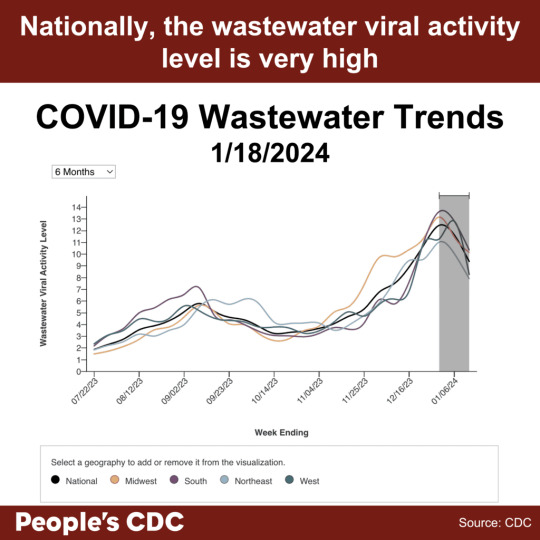
Although wastewater data does not provide the same level of detail as previous PCR-based testing data, wastewater monitoring is an important ongoing resource to inform us about the current COVID situation. While the provisional data tentatively shows a downward trend this week, time will tell whether this is a true decrease in the final data. A downward trend does not mean continued decreases are guaranteed or that protections should be relaxed. Multilayered protections help drive COVID spread lower, and relaxing protections can lead to a resurgence of viral spread.
Visit the CDC’s State and Territory Trends page to see available wastewater testing near you, including the number of wastewater sites reporting. Write your elected officials to let them know you want to keep and expand wastewater testing in your area and nationally.
Wins
In November 2023, the CDC’s Healthcare Infection Control Practices Advisory Committee (HICPAC) passed a series of draft proposals that will further weaken already insufficient protocols employed within healthcare settings. HICPAC refuses to reckon with the airborne nature of infectious diseases such as SARS-CoV-2, and does not propose crucial measures such as universal masking with well-fitted respirators, isolation periods, and ventilation. The People’s CDC has penned a letter to the ACLU alerting them of HICPAC’s irresponsible decisions, and the ramifications associated with them. We hope that by working together with the ACLU, we can implement public advocacy and legal actions in order to tackle this critical issue.
You can read the full letter here.
Johns Hopkins reinstated healthcare masking on 1/12/2024, in response to high respiratory virus levels. As with many other healthcare systems and public health departments that have restored healthcare masking when facing public pressure, we hope that universal masking can become a standard of care rather than a short term response to a surge. See “Take Action” below for more information.
Variants
JN.1, now the most prominent variant in the United States, is estimated to account for 85.7% of circulating variants by 1/20/2024. HV.1 is expected to drop to 5.3%, and all other variants are estimated to make up less than 2% each. Although ongoing viral spread allows opportunities for new variants to emerge, the latest 2023-2024 COVID vaccine boosters, COVID tests, and COVID treatments are still expected to be effective for JN.1.
Current updated booster uptake is low (as of January 19, 2024, the CDC reports that only 21.5% of adults and 11% of children have received it). It is not too late to get the updated booster, and to protect yourself against the latest variant!
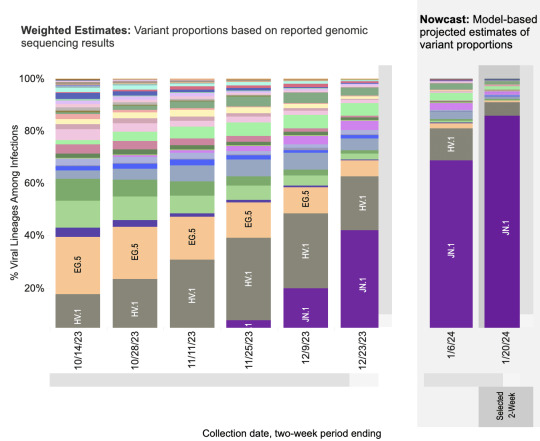
Hospitalizations
In the most recent week (ending January 13, 2024), we see a slight downward trend in new hospital admissions, currently at 32,861. We see a similar slight downtick in currently hospitalized patients with COVID , at 27,879. This most recent week shows a slight decrease in hospitalizations, although it is too soon to say whether hospitalizations for the current surge have passed their peak. Hospitals continue to be overwhelmed. The data also lacks information on hospital-acquired infections. We urge you to continue taking stringent precautions, such as donning a well-fitting respirator (e.g., N95, KN95) in all indoor spaces–and especially in healthcare settings.

Long COVID
Amid ongoing advocacy by Long COVID groups, the US Senate Committee on Health, Education, Labor, and Pensions (HELP) held a committee hearing on “Addressing Long COVID: Advancing Research and Improving Patient Care.” The hearing included testimony from three Long COVID patients and four Long COVID physicians and researchers, bringing much-needed attention to the urgent need for funding for Long COVID research and treatments, and to the need for improved access to care for Long COVID patients. We recognize the community care modeled by some of the panelists and attendees who wore masks for the hearing, and we wish the senators on the committee would mask up as well.
Take Action
Write your elected officials to let them know that Long COVID impacts all of us, and that we need ongoing support for Long COVID research and clinical care. Ask Senators to support bill S.2560, the Long COVID Support Act. Ask Representatives to support bills HR.1114 (Long COVID RECOVERY NOW Act) and HR.3258 (TREAT Long COVID Act).
Although some healthcare settings have reinstated masking in response to high COVID levels along with high respiratory virus activity, ongoing pressure is needed to restore, keep, and expand masking broadly. Use our letter template and toolkit to call or write your elected officials in support of healthcare masking.
Want to do more to support healthcare masking? Consider starting, sharing, or joining a local campaign. Check out work in Illinois, Maryland, and Wisconsin, just to name a few. Also, sign and share our letter to the ACLU asking them to join us in supporting safe and equitable access to healthcare. Sign on is open until 2/1/2024.
#op#covid#covid pandemic#covid news#covid 19#covid-19#covid isn't over#covid19#mask up#coronavirus#pandemic#people's cdc#pcdc#long covid#sars cov 2#sars-cov-2#coronavirus pandemic#wear a mask#covid variant#covid variants#covid vaccine#get vaccinated#covid vaccines#medical#disability#uspol#img#links#to read#described in alt text
184 notes
·
View notes
Text
Just a "mild" neuron infection you got from brunch with the girlies :)
Highlights
"Our study shows that the increase in serum biomarkers of neuronal and glial damage, sNfL and sGFAP, was present one week after resolution of asymptomatic SARS-CoV-2 infection or mild COVID-19 and was more pronounced in patients with cognitive impairment. Furthermore, 10 months after resolution of the infection, levels of these biomarkers were still significantly higher than in healthy controls, although reduced from those observed at baseline. At the same time, self-reported cognitive impairment appeared to worsen in the same subjects, suggesting that early neuronal and glial damage may have resolved by 10 months post-infection, although subjective cognitive impairment may persist or become more pronounced."
"The second relevant finding of our study is represented by the higher sNfL and sGFAP levels in the eleven COVID-19 patients complaining of cognitive failures at T0. Cognitive deficits are common after COVID-19 and can impair executive functions, attention, and episodic memory. Studies on the neuropsychological alterations during acute COVID-19 and in the post-COVID-19 phase show inhomogeneous results, particularly for the variable time of the evaluation, ranging from two to five weeks after the onset, up to one year after the recovery. Most of these studies, however, mainly focus on hospitalized patients, being non-hospitalised patients somehow overlooked."
"A recent study showed that more than one-third of hospitalized and non-hospitalized patients after COVID-19 experienced a perceived cognitive deficit after 30 days after hospitalization or outpatient infection. It should be noticed that, differently from our population, this patient cohort included mainly hospitalized patients with remarkable comorbidities. Our study shows cognitive failure immediately following the recovery in a not negligible percentage (7.5%) of COVID-19 patients, suggesting a clinical impact of SARS-CoV-2 even in individuals with the mildest forms of the disease."
"The previous literature on mild or non-severe COVID-19 cases clearly indicates their significant impact on cognitive function, particularly in domains such as working memory and processing speed, with a good potential for recovery over time though some impairments may persist. Cognitive failures, therefore, may interfere with highly complex working activities, particularly those that require attending to and remembering large amounts of information, like academic or administrative jobs."
"Our patients with CFQ scores higher than 43 could experience high difficulties when returning to their work. The negative impact on daily functioning and quality of life of post-COVID cognitive dysfunction has been highlighted by Quan et al. emphasizing the economic, health, and social burden associated with. In fact, Beck and Flow demonstrate that individuals who had contracted SARS-CoV-2 infection reported cognitive failures at work and difficulty performing their tasks, highly detrimental to their performance, and may leave a job looking for other sources of employment."
"This evidence provides support for the need to perform careful neuropsychological evaluations for all the workers following SARS-CoV-2 infection, to allow both an adequate resumption of work activities and to monitor the onset of any cognitive impairment even in workers with a previous mild COVID-19 or asymptomatic infection."
#mask up#covid#covid 19#covid isn't over#pandemic#covid conscious#long covid#covid is airborne#wear a mask#coronavirus
13 notes
·
View notes
Text
The Daily Dad
Things you might want to know, for Dec 19, 2023:

23andMe confirms hackers stole ancestry data on 6.9 million users — It’s probably too late and my warnings are pointless, but please kids… don’t give something as valuable as your DNA to a for-profit company that views security as a cost-center. It’s not just the millions of 23andMe suckerscustomers who have lost control of their genetic identity… their family members are compromised, too. Maybe it’s just me, but finding out you’re actually 8% Neanderthal isn’t worth giving the Russian mob the blueprints to your ancestry.
COMIXOLOGY, RIP — I was there at the start, with my little iPhone 3GS, ready to plow through a digital comic collection in Guided View mode. I was certain Comixology was going to save the comics business, and revitalize the audience. Now here we are at the end, nothing has been achieved, and a decade of progress has disappeared into the Kndle app, never to be seen again. Fucking A.
Using the iPad Pro as a Portable Monitor for My Nintendo Switch with Orion, a Capture Card, and a Battery Pack — Okay, I eat this kind of shit up. It’s absurd on a practical level, but it’s the kind of thing I’m likely to try, just for the hell of it.
Here’s what intentionally crashing a plane for YouTube clicks gets you — To paraphrase Robin Williams: the ability to crash a plane for attention is God’s way of telling you that you’re making too much money.
Facebook Messenger Rolls Out End-to-End Encryption by Default — About fucking time, Zuck. I guess he figures the petabytes of pre-E2E conversations that they can use to train their LLM will suffice, so it’s time to let the peasants have their privacy.
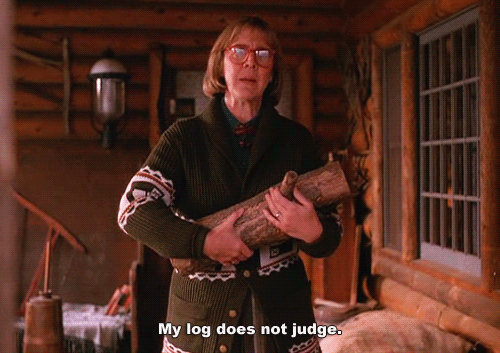
Noah Hawley: How 'Twin Peaks' Influenced My Work — If you were between 16 and 30 in 1990 and had any sort of creative impulse, Twin Peaks influenced your work.
What Did It Mean That Howard the Duck Was Trapped 'in a World He Never Made'? — The ‘80s movie and modern MCU cameos don’t do justice to the comic book Howard of the 1970s. He was dark and weird and absurd and (?) sexy and grown-up in a way that other comics on the spinner rack hadn’t been in decades, and I was enthralled.
The use and misuse of evolutionary psychology in online manosphere communities: The case of female mating strategies
The Bizarre Cottage Industry of YouTube Obituary Pirates
Warner Bros. Reverses Course on 'Coyote vs. Acme' After Filmmakers Rebel

‘Now and Then,’ the Beatles’ Last Song, Is Here, Thanks to Peter Jackson’s AI — The song is very good, and the technical skill and care that went into its recovery is just as interesting. The video is just goofy fun, very much in keeping with The Beatles pre-breakup sensibilties. Overall, a delightful and unexpected treat in a year that was full of absolute bullshit.
Apple Now Selling Standalone USB-C AirPods Pro Case for $99
Texas sues Pfizer with COVID anti-vax argument that is pure stupid — I feel like most headlines featuring “Texas” or “anti-vax” should always include “pure stupid” as well.
How TV Executives Ruined Everything
Humane Debuts $700 AI Pin With 'Laser Ink Display' — Do I think this will be a success? No. It’s too niche and weird. But as a signal of life beyond the smartphone, it’s an intriguing development.

DAK and the Golden Age of Gadget Catalogs — As a household, we didn’t receive a ton of mail as a kid… we saw only a fraction of the junk that hits my physical mailbox these days. But every few months, the DAK catalog would arrive, and I knew I was in for at least a night or two of nerdy, consumerist joy. Page after page of discontinued, misconfigured, or too-oddball-for-the-general-market gadgets were waiting to tempt me with deep discounts on things no one really needed. Sheer bliss, I tell you.
How to Stop Your Kids From Ruining Your Apple Music Recommendations
Prince's Purple Rain puffy shirt is up for auction — You’ve gotta figure Prince’s clothes would fit an American Girl doll.
Audible's Moriarty podcast understands what makes Arthur Conan Doyle's arch-villain survive
The Real Reason You (Still) Watch Reality TV
10 notes
·
View notes
Text
Lula government ends daily COVID-19 tracking in Brazil
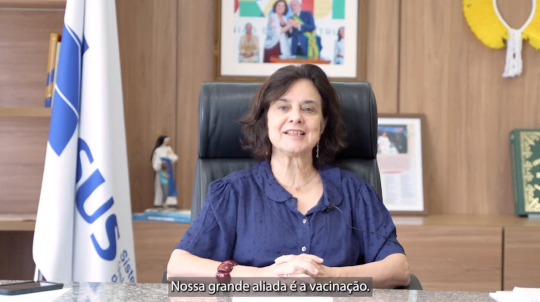
Facing the clear threat of a worsening pandemic in Brazil, driven by the Omicron XBB.1.5 subvariant, the Workers Party (PT) government of President Luiz Inácio Lula da Silva has signaled its intention to declare the pandemic over and get the Brazilian population used to “living” with the coronavirus.
On February 16, the Health Ministry announced that it will start releasing COVID-19 data of cases, deaths and vaccination rates weekly and no longer daily, starting March 3. Trying to justify what in practice means a further departure from monitoring the pandemic in the country, the Health Ministry’s director of immunization, Eder Gatti, stated that only nine of the 27 Brazilian states update the data daily, which supposedly does not “allow an epidemiological analysis.” Still, he claimed,“We are not restricting data. ... What we want here is to facilitate the work with the data and send weekly data that is more accurate.”
This claim is patently false. If the Lula government had a genuine concern about the pandemic, the least it could do is coordinate a national effort and assist the states in implementing a system to monitor the pandemic on a daily basis, with a mass testing program, genetic sequencing of the variants in circulation, among other measures completely ignored by the “herd immunity” policy of the former fascistic President Jair Bolsonaro.
However, almost two months after taking office, the Lula government has not reversed the Bolsonaro government’s measures to prioritize corporate interests over human lives, including its ending of the National Public Health Emergency due to COVID-19 as early as April 2022. The Lula government has also failed to implement awareness campaigns about the airborne transmission of SARS-CoV-2, the importance of wearing quality masks and distributing them for free, as well as other basic public health measures that would have an almost immediate impact and could prevent cases and deaths.
Continue reading.
#brazil#politics#brazilian politics#coronavirus#covid 19#nisia trindade#mod nise da silveira#image description in alt
37 notes
·
View notes
Text
Please be aware, data not being collected does not mean there is no data. Reach out to your local representatives to push HARD for continued funding of waste water monitoring. It is the most reliable, and an incredibly vital resource. Without information about viral trends, it becomes quite uncertain how to proceed for the average person and for communities.
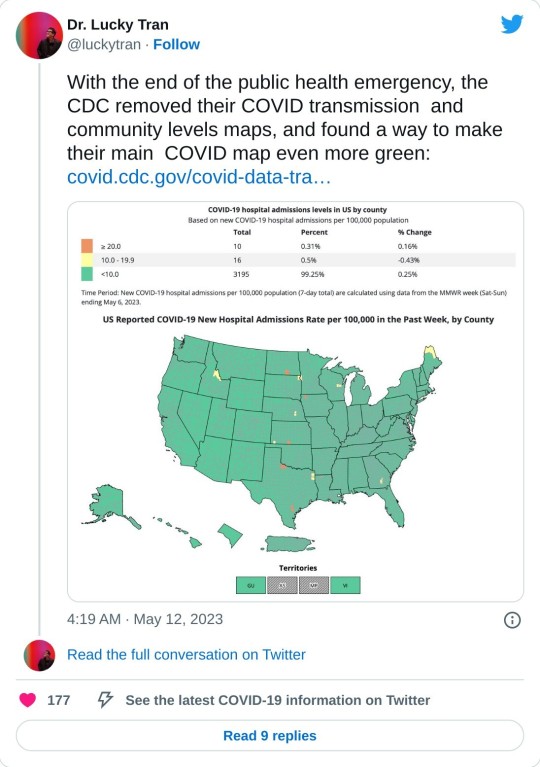
I posted an article awhile back about waste water monitoring finding quite potentially being in a precarious position. Furthermore this would lead to outbreaks and the general public being unawares and run afoul of horrible outcomes.
The work of aggregating and collating of data is being left to individuals, which is not only horrifying, unethical and well out of step with science based methods and guidance, but highly unusual given data is kept and provided for other illnesses, especially ones as severe and concerning as covid-19 (SARs CoV 2).
For the time being, I personally will be assuming transmission is moderate to high in addition to my sources. In the absence or great reduction of data and reports, greater estimations and assessment of made, and when only observations, assumed. Be as safe as you can everyone 💝 - Admin
Please be aware of what may no longer be offered, operating or an out of pocket cost. Masks, tests (all types), vaccines, remote options, COVID-19 tracking apps. Also be mindful of any local or nationwide level policies, proposals, news or trends that cite mask and other NPI removals, bans, stigma or efforts towards criminalization.
For the time being, the following resources remains invaluable:

https://biobot.io
It has come to my attention the person whose account is Laughter In Light has falsely claimed a prominent disability advocate encouraged or engaged in doxxing and slander with no demonstrable proof which has led to great harm. Laughter in light has provided some very helpful information throughout the pandemic. It is also important to be aware, critical and hold people into account for their actions, ideologies, commentary/statements and or stances. There are many other wonderful sources to inform oneself and stay up to date. - Admin
Provides regular updates on infectious diseases news

Sadly they don't have a website or any links I know of. Their Twitter is public however and can be viewed even without an account.

Give incredible analysis and updates on SARS CoV-2! Excellent medical and scientific communicator!

Stella has been amazing since the beginning and continues to be. Definitely worth following! Check out their link tree! They're also on Tiktok!
If anyone has any international resources for updates and tracking, please add it via reblog and I'll definitely share! - Admin
#covid-19#covid 19#sars cov 2#covid#Data tracking#Reports#Waste Water Monitoring#Cases#Deaths#Excess Deaths#Long covid#long haul covid#the pandemic#pandemic#public health#Lucky#Lucky Tran#Peoples CDC#Biobot Analytics#Laughter in Light#Tiffany Najberg#Walgreens Covid-19 Index#Waste Water Scan Dashboard#Our World In Data
20 notes
·
View notes
Text
Australia News: 24.3.24.
1.) "The Australian dream of owning your own home - Albanese style. Coming to a city near you."

2.) "Media Shame File: Journalists show their economic illiteracy daily when it comes to immigration, but even so it's worrying that the political editor of The Age doesn't seem to understand how unemployment can fall during record-high population growth."
I'd say they were fully aware of what they were doing.

3.) QLD HOMESCHOOLING CRACKDOWN ->
https://youtu.be/TudVFaYc36A
Make a submission: https://qldparlcomm.snapforms.com.au/form/eetsc---education-general-provisions-and-other-legislation-amendment-bill-2024.
It is highly likely that other governments will enact similar harsh laws if they succeed in Queensland. Do not let them.
Also
"Our main points of concern:
we do not want to be restricted to using the Australian Curriculum.
reporting to EVERY area in the plan and PROVING educational progress is too much and not even required in schools.
determining if home education is in the best interest of the child is a parental right, this power doesn't belong with the Education department."
Parents should have the freedom to decide how best to educate their children because education is not a one-size-fits-all solution.
4.) NDIS - What is myplace?
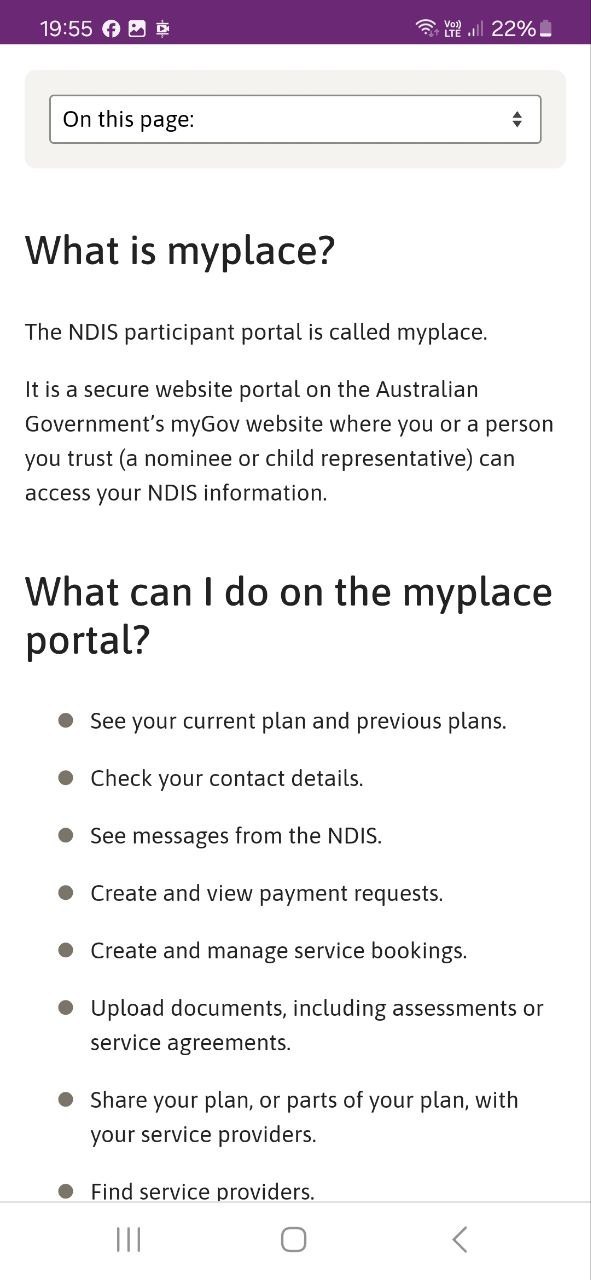

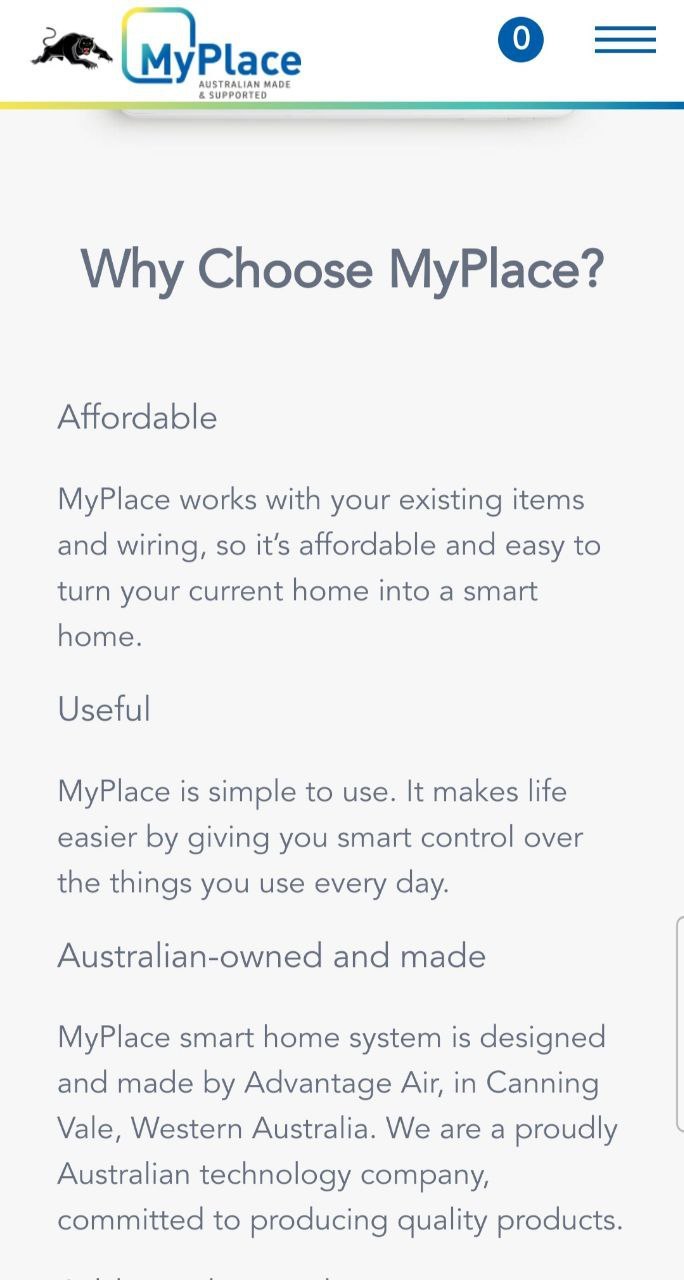
"Just a heads up for all you MyPlace people. There are already trade marked companies in Australia using that name.
Be warned you may be in danger of copyright infringement and court action.
I'm telling you this because I care that you don't get sued, and also because you really should not use someone else's business name. Be original rather than just copying someone else.
The MyPlace brand in Australia is to do with Government, Monitoring, Professional Sports Sponsorship, Public Education and The NDIS. Do you really want your name involved with that?
I wouldn't.
@roobsaussieflyers."
5.) Australia Immigration ->

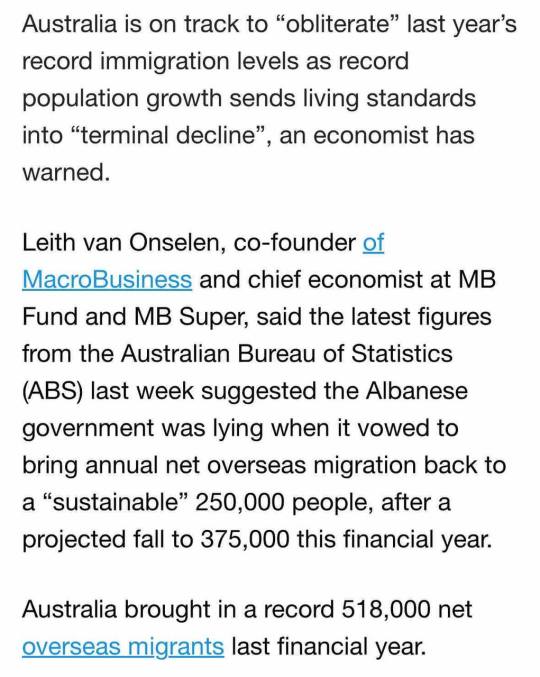
"Record immigration is causing a housing crisis that’s now a human catastrophe
The more serious governance issue is Labor federal government lying last year saying it would reduce immigration
One Nation exposed the Lib-Lab Uniparty “big Australia”
People want immigration cuts." - Senator Roberts uncensored - Telegram.
6.) "Getting a COVID jab is safer than taking aspirin."

"Currently appears on the University of Melbourne website.
“The risk of rare side effects from COVID-19 vaccines like AstraZeneca are greatly exaggerated as they are far safer than many medicines people are taking every day.” "
- @PeoplePowerAus.
2 notes
·
View notes
Text
Is Social Media Useful in Spreading Information on COVID-19 in Malaysia?

In the current digital era, social media has become an integral part of our lives, connecting us to our family, friends, and the world. In addition to sharing photos, social media has played a significant role in disseminating information about crucial issues, particularly during the COVID-19 pandemic. Let's explore how social media helps spread virus-related information and its impact on digital communities.
The Power of Social Media for COVID-19 Information
1. Rapid Dissemination of Information
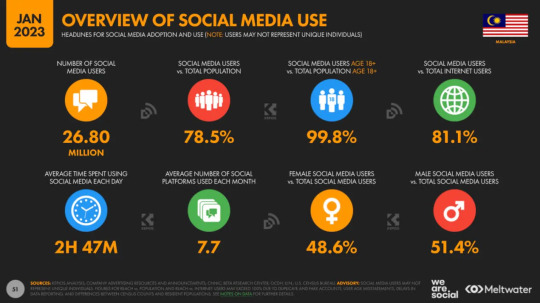

During the early phases of the COVID-19 pandemic, the increased social media activity in Malaysia played a crucial role. Malaysians were well-connected digitally, as they spent an average of 2 hours and 47 minutes daily on social media, surpassing the global average by a significant margin. This participation was primarily motivated by the need to obtain information (76.2%) and keep up with news and events (65.8%). Facebook, Twitter, and WhatsApp were the primary sources for vital updates, news, and recommendations. This ongoing flow of information helps increase the awareness and preparedness of the digital community (Howe, 2023).
2. Real-time Updates
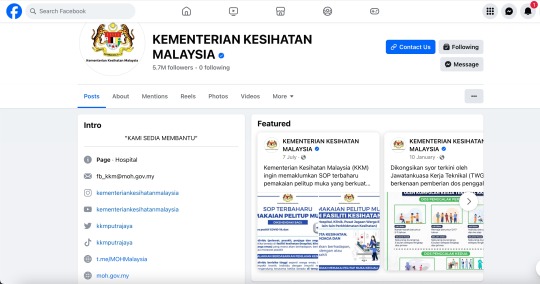

The Malaysian government provided up-to-date COVID-19 information via e-government and social media. They relied on channels such as the Ministry of Health's Official Portal, specialised Facebook pages (such as CRPC and KKM), and the CPRC KKM channel on Telegram. The Director-General of Health's daily press briefings are not only broadcast live on television but also live online via Facebook. In April 2020, they released the MySejahtera mobile app to assist users in monitoring their health and reporting check-in locations, allowing for prompt responses to control the spread of the virus (Dawi et al., 2021).
3. Community Support

During these difficult times, social media has been essential in helping Malaysians feel more connected to one another, with many Facebook groups and online communities offering information and support. For example, neighbours used platforms such as Nextdoor to offer assistance to those in need, and digital communities united in unprecedented ways to share resources and aid one another (FMT Media Sdn Bhd, 2020). Moreover, #benderaputih groups were formed on Facebook to share addresses for assistance and information on local food banks, with Malaysians in need flying white flags outside their residences to indicate distress. The digital community, including neighbours, personalities, and businesses, responded by donating food and other necessities, demonstrating the power of social media to bring communities together in times of crisis (BBC News, 2021).
4. Countering Misinformation

By actively utilizing social media, the Malaysian Ministry of Health (KKM) has taken significant measures to combat COVID-19 misinformation. Through their official social media channels, KKM provides accurate and up-to-date information, dispels misconceptions, and addresses concerns, ensuring that the public receives trustworthy information and is better equipped to make informed decisions during the pandemic. In addition, KKM has released information about the repercussions of disseminating false information. This proactive approach not only helps counter Misinformation but also fosters a sense of trust in official sources, which is crucial during a public health crisis (Euronews, 2020).
The Dark Side of Social Media in COVID-19 Information Spread
1. Misinformation and Rumors

In Malaysia, as in many other countries, social media has served as a breeding ground for Misinformation and rumors about COVID-19. Facebook and WhatsApp have been used to spread false information about the virus's origins, prevention, and treatment options. This has led to public confusion and, in some cases, hazardous behavior, such as disregarding medical advice. False information can undermine the efforts of health authorities and exacerbate the pandemic's effects, causing unnecessary alarm (Balakrishnan et al., 2021).
2. Amplification of Fear

Despite its many advantages, social media can be a double-edged instrument, particularly during a crisis such as the COVID-19 pandemic. One of its negative characteristics is its potential to amplify fear and anxiety. Sensationalized headlines and the dissemination of misleading images can elicit strong emotions, resulting in increased stress and negative effects on mental health. The internet has been rife with misleading information about the virus, including conspiracy theories and misleading statistics. There have been instances where images fraudulently purporting to depict the coronavirus under a microscope have caused panic and confusion. Such false information can be extensively disseminated on social media platforms like Facebook, inciting panic and undermining accurate comprehension (Euronews, 2020).
Conclusion
In conclusion, social media has proven to be a powerful tool in spreading information about COVID-19 in Malaysia. During the pandemic, it rapidly disseminated vital information and connected people, nurturing community and support. The government's use of social media channels contributed to disseminating timely information to the public. However, this has a negative aspect: disseminating false information and terror. Misinformation and sensationalized content have led to public perplexity and hysteria. To maximize the benefits of social media, we must use it responsibly and ensure that accurate information prevails, particularly during the pandemic. Connecting and informing us, social media can be a force for good, but it is up to each of us to ensure that it serves our best interests.
What's your opinion on the role of social media in spreading COVID-19 information in Malaysia? Share your thoughts and vote below.
Reference list
Balakrishnan, V., Ng, K. S., & Rahim, H. A. (2021). To share or not to share – The underlying motives of sharing fake news amidst the COVID-19 pandemic in Malaysia. Technology in Society, 66, 101676. https://doi.org/10.1016/j.techsoc.2021.101676
BBC News. (2021). Malaysians in Covid lockdown fly white flags to ask for help. BBC News. https://www.bbc.com/news/world-asia-57717214
Dawi, N. M., Namazi, H., Hwang, H. J., Ismail, S., Marešová, P., & Krejcar, O. (2021). Attitude toward protective behavior engagement during COVID-19 pandemic in Malaysia: the role of e-government and social media. Frontiers in Public Health, 9. https://doi.org/10.3389/fpubh.2021.609716
Euronews. (2020, January 30). Coronavirus: Malaysia arrests five for spreading misinformation online | #TheCube. Euronews. https://www.euronews.com/my-europe/2020/01/29/coronavirus-malaysia-arrests-five-for-spreading-misinformation-online-thecube
FMT Media Sdn Bhd. (2020). Nextdoor: Free network connecting neighbours in quarantine. Freemalaysiatoday. https://www.freemalaysiatoday.com/category/leisure/2020/03/29/nextdoor-free-network-connecting-neighbours-in-quarantine/
Howe, S. (2023). Social Media statistics for Malaysia [Updated 2023]. Meltwater. https://www.meltwater.com/en/blog/social-media-statistics-malaysia
#mda 20009#week 7#social media#covid19 malaysia#public health#digital communities#malaysia#stayinformed
5 notes
·
View notes
Text
On July 19, Bloomberg News reported what many others have been saying for some time: Twitter (now called X) was losing advertisers, in part because of its lax enforcement against hate speech. Quoted heavily in the story was Callum Hood, the head of research at the Center for Countering Digital Hate (CCDH), a nonprofit that tracks hate speech on social platforms, whose work has highlighted several instances in which Twitter has allowed violent, hateful, or misleading content to remain on the platform.
The next day, X announced it was filing a lawsuit against the nonprofit and the European Climate Foundation, for the alleged misuse of Twitter data leading to the loss of advertising revenue. In the lawsuit, X alleges that the data CCDH used in its research was obtained using the login credentials from the European Climate Foundation, which had an account with the third-party social listening tool Brandwatch. Brandwatch has a license to use Twitter’s data through its API. X alleges that the CCDH was not authorized to access the Twitter/X data. The suit also accuses the CCDH of scraping Twitter’s platform without proper authorization, in violation of the company’s terms of service.
X did not respond to WIRED’s request for comment.
“The Center for Countering Digital Hate’s research shows that hate and disinformation is spreading like wildfire on the platform under Musk’s ownership, and this lawsuit is a direct attempt to silence those efforts,” says Imran Ahmed, CEO of the CCDH.
Experts who spoke to WIRED see the legal action as the latest move by social media platforms to shrink access to their data by researchers and civil society organizations that seek to hold them accountable. “We're talking about access not just for researchers or academics, but it could also potentially be extended to advocates and journalists and even policymakers,” says Liz Woolery, digital policy lead at PEN America, a nonprofit that advocates for free expression. “Without that kind of access, it is really difficult for us to engage in the research necessary to better understand the scope and scale of the problem that we face, of how social media is affecting our daily life, and make it better.”
In 2021, Meta blocked researchers at New York University’s Ad Observatory from collecting data about political ads and Covid-19 misinformation. Last year, the company said it would wind down its monitoring tool CrowdTangle, which has been instrumental in allowing researchers and journalists to monitor Facebook. Both Meta and Twitter are suing Bright Data, an Israeli data collection firm, for scraping their sites. (Meta had previously contracted Bright Data to scrape other sites on its behalf.) Musk announced in March that the company would begin charging $42,000 per month for its API, pricing out the vast majority of researchers and academics who have used it to study issues like disinformation and hate speech in more than 17,000 academic studies.
There are reasons that platforms don’t want researchers and advocates poking around and exposing their failings. For years, advocacy organizations have used examples of violative content on social platforms as a way to pressure advertisers to withdraw their support, forcing companies to address problems or change their policies. Without the underlying research into hate speech, disinformation, and other harmful content on social media, these organizations would have little ability to force companies to change. In 2020, advertisers, including Starbucks, Patagonia, and Honda, left Facebook after the Meta platform was found to have a lax approach to moderating misinformation, particularly posts by former US president Donald Trump, costing the company millions.
As soon as Musk took over Twitter in late October 2022, he proceeded to fire many of the staff members responsible for keeping hate speech and misinformation off the platform and reinstated the accounts of users who had been previously banned, including Trump and influencer Andrew Tate, who is currently indicted under human trafficking laws in Romania. A study released earlier this year from the University of Southern California’s Information Sciences Institute, Oregon State University, UCLA, and UC Merced found that hate speech increased dramatically after Musk took the helm at Twitter. Over roughly the same time period, the company saw its advertising revenue slashed in half as brands—including General Motors, Pfizer, and United Airlines—fled the platform, apparently concerned about their products appearing next to misinformation and hate speech.
And this has bothered Musk, immensely. On November 4, 2022, he tweeted, “Twitter has had a massive drop in revenue, due to activist groups pressuring advertisers, even though nothing has changed with content moderation and we did everything we could to appease the activists. Extremely messed up! They’re trying to destroy free speech in America.”
PEN America’s Woolery worries that, whether or not X’s lawsuit against CCDH holds water, the cost of fighting it will be enough to intimidate other organizations doing similar work. “Lawsuits like this, especially when we are talking about a nonprofit, are definitely seen as an attempt to silence critics,” she says. “If a nonprofit or another individual is not in a financial position where they can really, truly give it all it takes to defend themselves, then they run the risk of either having a poor defense or of simply settling and just trying to get out of it to avoid incurring further costs and reputational damage.”
But the lawsuit doesn’t just put pressure on researchers themselves. It also highlights another avenue through which it now may be more difficult for advocates to access data: third-party social listening platforms. These companies access and analyze data from social platforms to allow their clients—from national security contractors to marketing agencies—to gain insights into their audiences and target messages.
Tal-Or Cohen Montemayor, founder and executive director of CyberWell, a nonprofit that tracks anti-Semitism online in both English and Arabic, says that in November 2022, shortly after Musk took ownership of the company, CyberWell reached out to Talkwalker, a third-party social listening company, to get a subscription that would allow them to analyze anti-Semitic speech on the platform then called Twitter.
Cohen Montemayor says Talkwalker told her the company could not take them on as a client because of the nature of CyberWell’s work. She says it appears that “the existing open source tools and social listening tools are being reserved and paywalled only for advertisers and paid researchers. Nonprofit organizations are actively being blocked from using these resources.”
Talkwalker did not respond to a request for comment about whether its agreements with X prohibit it from taking on organizations doing hate speech monitoring as clients. X did not respond to questions about what parameters it sets for the kinds of customers that third-party social listening companies can take on.
According to X’s lawsuit against CCDH, a 2023 agreement between Brandwatch and X outlined that any breach of X data via Brandwatch’s customers would be considered the responsibility of the social listening company. On X competitor Bluesky, Yoel Roth, the former senior director of trust and safety at Twitter, posted, “Brandwatch’s social listening business is entirely, completely, 100% dependent on Twitter data access, so I guess it’s not surprising to see how far backwards they’re bending to placate the company.”
For its part, in a July 20 tweet, Brandwatch referenced the same CCDH report cited in the X lawsuit, saying, “Recently, we were cited in an article about brand relevance that relied on incomplete and outdated data. It contained metrics used out of context to make unsubstantiated assertions about Twitter.”
Brandwatch did not respond to a request for comment.
But CCDH’s Ahmed says the assertion that his organization’s research is based on incomplete data is a way for X to obfuscate problems with its own platform. “Whenever you claim that you’ve found information on there, they just say, ‘No, it’s a lie. Only we have the data. You couldn't possibly know the truth. Only we know the truth. And we grade our own homework,’” he says.
A representative from another third-party social listening tool that uses X data, who asked to remain anonymous to protect their company from retaliation by X, confirmed to WIRED that companies like theirs are heavily reliant on Twitter/X data. “A lot of the services that are very Twitter-centric, a lot of them are 100 percent Twitter,” they say, noting that Instagram has long since shut down its API, and that conversations on Meta’s platforms tend not to be as public as those on X. “In terms of data, Twitter continues to play a significant role in providing data to analytics companies.” They note that, while X’s new paid-for API has put the squeeze on third-party analytics companies—“it’s basically almost like they’re holding you for ransom”—losing access to X data entirely could kill a company.
They add that they have not seen guidelines that restrict the use of X data for hate speech or advocacy research, but there are specific “know your customer” guidelines that prohibit sharing X data with government agencies without prior permission. The same day X announced the lawsuit, on July 31, America First Legal, a right-wing nonprofit led by former Trump appointee Stephen Miller, announced that it had filed Freedom of Information Act (FOIA) requests to examine communications between CCDH and various US government agencies, alleging that it is a “coordinator of illegal censorship activities.” (Ahmed says his organization has never coordinated with the US government). This would, if true, seemingly also be a violation of those terms of service.
The X lawsuit also alleges that the CCDH is being funded by X’s competitors as well as “government entities and their affiliates,” but says that “X Corp. currently lacks sufficient information to include the identities of these entities, organizations, and persons in this Complaint.”
Even without legal threats, there are significant costs to researchers focused on disinformation and hate speech on platforms. Experts who spoke to WIRED say they worry the threat of legal action could cause a chilling effect on other organizations that study hate speech and disinformation.
After publishing a report showing that anti-Semitic content had doubled on the platform after Musk’s takeover, Sasha Havlicek, cofounder and CEO of the Institute for Strategic Dialogue (ISD), a London-based think tank focused on extremism and disinformation, says the company experienced a deluge of abusive tweets. “In response, Twitter came out with a thread that got 3 million views or so,” she says. “Musk himself responded with a poop emoji.”
In December, Musk worked with right-wing journalists to release the so-called Twitter Files, a selection of internal documents that seemed to show that pre-Musk Twitter had silenced some conservative users. Some of the documents included the names and emails of disinformation researchers at the Stanford Internet Observatory, many of whom were undergraduate students at the time. One former student, who asked to remain anonymous for fear of harassment, says that people whose emails ended up in the Twitter Files have been targets of ongoing harassment for their role in disinformation research.
“Seeing how things have gone, and seeing the possibility of being harassed, has made a lot of people that worked on it very closely to now think twice,” says the former student.
“You have to ask,” says the ISD’s Havlicek. “Who’s the censor now?”
Havlicek says she hopes that the EU’s Digital Services Act (DSA), which will eventually mandate access for researchers to data from large social platforms, will be a road map for other countries. Whether there will be legal land mines regarding data pulled legally by European researchers under the DSA but shared with non-European researchers or advocates is another open question.
“I was in Brussels a few weeks ago talking to the Digital Services people about how we can use the data that will be made available through the DSA data transparency regime,” says Ahmed. “And when that appears, we will use that in the most effective way possible.”
3 notes
·
View notes
Text
Public Health of today
The days of having commercials of how dangerous smoking is and PSA (Public Service Announcement) such as TakNak, a PSA showing multiple variety of the public rejecting a stick of cigarettes are not necessary long gone but they are not the biggest trend at the moment.
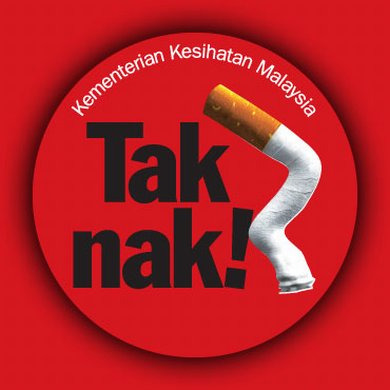
source: http://cikgutancl.blogspot.com/2008/06/remaja-sekarang-tak-nak-atau-mereka.html
As an ex smoker myself, it is safe to say it did not work on me but I vividly remember that I will doubt myself when I wanted to have a puff thinking about all the advertisements and signs everywhere such like the one above. The doubt alone in my opinion makes it successful PSA, just that maybe I was just a little too on edge when I was in my rebel stage in life. 🤡
Today, the way the Ministry of Health Malaysia (MOH) pushes out public health with the most affect would obviously the use of social media such as Twitter and the creation of the hit app, MySejatera.

source: https://www.edgeprop.my/content/1769410/ministry-health-mysejahtera-not-spying-app
The past 2 years, our beloved Director-General of Health of Malaysia, Tan Sri Dato’ Seri Dr Noor Hisham Abdullah, made a huge move of being hyper active on Twitter. He was fact checking questions and replying to them on Twitter on a a daily. Even though he is not as active as back then, I still see him retweeting and liking issues that he thinks that need more attention and he will always have my respect for reaching out to wider audiences knowing not everyone is into traditional media like the new.
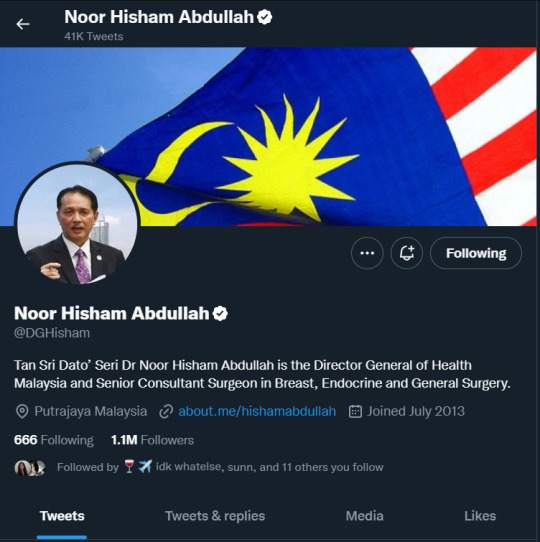

Source: Twitter
On the other hand, the creation of MySejatera was just a brilliant move. I see it as killing two birds with one stone by making it mandatory to have the app to both open a business or even as a consumer so everyone has to download the app. This makes tracking a big amount of the public with ease. Down the road of the pandemic, they started updating the software to help with Q&A about Covid-19 and what I would say killing the third bird, using it as the app to track an individual's vaccine status. The app also helped with setting dates for everyone's vaccine, advice on what to do if one is feeling unwell after the vaccine and gave everyone a digital certificate on top of that.
Nowadays as we approach the endemic and monitoring of the virus is not that big of a deal, the app still keeps the records for the individuals with the additions of other information about other common health issues which is really neat.

I am going to be real, I usually am not very proud of my country but aside of our passion for food and certain sports, I confidently say I am very proud of our health care and their commitment to help advice the public with any health problems without breaking the bank.
Forget about the PSAs about quitting smoking, it may not have bring me to a healthier lifestyle but they sure did make me feel good about what I have in my country right here.
This is Loren's Beautiful Mind, thank you for staying in my dangerous place. Peace ✌
8 notes
·
View notes
Text
Spanish climber emerges from cave after 500 days in isolation
AFP | 15 April 2023
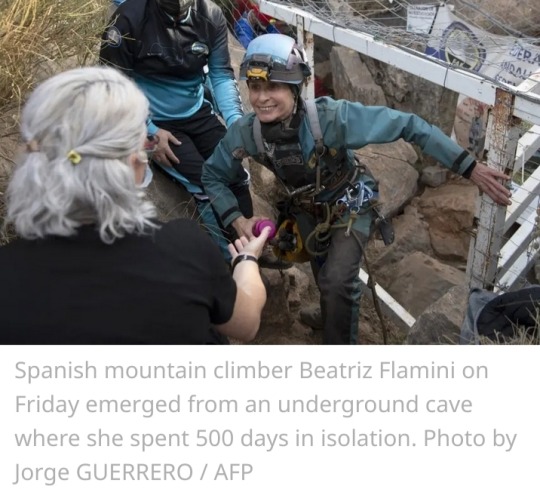
50-year-old climber Beatriz Flamini on Friday evening left an underground cave in Motril, southern Spain, where she spent 500 days in total seclusion as part of an experiment on the effects of isolation on the human body.
Wearing dark sunglasses, Beatriz Flamini smiled and embraced family members who had gathered to greet her as she climbed out of the cave near Motril in southern Spain.
"I haven't talked to anyone for a year and a half, only myself," the experienced mountaineer and solo climber told reporters, calling the experience "excellent, unbeatable."
Flamini began her challenge on 21 November 2021 – before Russia's invasion of Ukraine and while the world was still in the grip of the Covid-19 pandemic.
She remained 70 metres (230 feet) underground, except for a week when she was forced to leave the cave because an internet router that allowed her to call for help in an emergency broke down.
While the problem was being fixed, Flamini remained in isolation in a tent, she and members of her team told daily newspaper El Pais and other Spanish media.
"I don't know what has happened in the world...for me it is still 21 November 2021," she told reporters after leaving the cave.


Flamini said she spent her time reading with the aid of artificial lights, exercising, and knitting woolly hats.
She was monitored by a technical team, who left food at an exchange point in the cave without having contact with her.
Flamini had two cameras to document her experience, which will be turned into a documentary by Spanish production company Dokumalia.
"There have been many challenges of this type, but none with all the rules that were set," said David Reyes of the Andalusian Federation of Speleology, who was in charge of her security.
"Being alone and in total isolation, without contact with the outside, without (natural) light, without time references," he told reporters.
Spanish Tourism Minister Hector Gomez called it an "extreme endurance test," which he hoped would have "great value" for science.
Flamini said one of the toughest moments came when the cave was invaded by flies, but she "never" considered abandoning the challenge.
"There have been difficult moments, and it is true that there have been very beautiful moments, and both are what made it possible to carry one," she said.
"I got along very well with myself," she added.


#Beatriz Flamini#isolation#underground cave#Dokumalia#El Pais#Andalusian Federation of Speleology#Motril#Spain
4 notes
·
View notes
Text

Boeing delivers the last QF-16 "Zombie Viper" target drone from the Jacksonville unit
Fernando Valduga By Fernando Valduga 08/16/2022 - 7:45 PM in Military
Boeing delivered the final QF-16 from Cecil Airport in Jacksonville, Florida, on July 29. (Photo: Boeing)
The U.S. Air Force (USAF) received Boeing's final QF-16 "Zombie Viper" air target when the aircraft was delivered to the 82nd Air Target Squadron at Tyndall Air Base in Panama City, Florida.
The last of the more than 75 drone targets of the QF-16 modification line at Cecil Airport was accepted by the Integrated Aircraft Maintenance Operations (DCMA) personnel of the Defense Contract Management Agency (AIMO) St. Augustine, on July 29.
A second QF-16 line, based on the 309th Aerospace Maintenance and Regeneration Group in Tucson, will continue to operate through the remaining acquisition contract. More than 120 of the retired F-16s must be modified on air targets under the current contract.
The QF-16 is an optionally piloted reusable air target system, modified from previously retired old F-16 aircraft, which have already been used in U.S. Air Force combat missions.
After modification, the aircraft can be piloted by a pilot or via remote control by a qualified group of ground operators and technicians who monitor performance.
Without risk to the crew, the aircraft can fly on a multitude of missions, including testing newly developed weapon systems, real air-to-air missile firing training, testing of real ground-to-air missile firing, automatic takeoff and landing, and supersonic flights.

The first unmanned flight of the QF-16 Zombie Viper took place on September 23, 2013. Since then, more than 75 modified aircraft have been delivered from Boeing's facilities in Jacksonville.
The QF-16 platform is the successor to the QF-4 Phantom drone, which was retired in 2016.
Boeing previously received retired F-16 aircraft, which were regenerated from storage at the 309th Aerospace Maintenance and Regeneration Group in Tucson, Arizona, and flew to Cecil Airport to install drone equipment to prepare the aircraft for its new mission.
DCMA and its industry counterparts faced several obstacles throughout the production life of the QF-16 aircraft. These obstacles included supply chain interruptions, the COVID-19 pandemic and a variety of maintenance problems on the aircraft over 30 years old.
"We work daily, directly in the hangar and side by side with the contractor, to solve a variety of production problems," said Michael Jackson, a quality assurance specialist at DCMA AIMO St. Augustine. “Our DCMA team worked diligently to overcome all obstacles, alleviating production delays and delivering the remaining aircraft on schedule and on budget.”
“The QF-16 provides crucial capacity for the Air Force and Navy in the development of next-generation weapons systems,” said Navy Commander Gabriel Hohner, commanding officer of DCMA AIMO St. Augustine. I am proud of the partnership that DCMA had with Boeing here to deliver this capacity."

The QF-16s have always been delivered from Boeing to the 82nd Air Target Squadron at Tyndall Air Base for operational use. Each aircraft maintains a lifespan of approximately 300 flight hours.
Tags: Military AviationboeingDronesQF-16USAF - United States Air Force / U.S. Air Force
Previous news
Russia announces date of the first flight of the Sukhoi Su-75 Checkmate
Next news
Investigation of MV-22 accident in Norway points to pilot error
Fernando Valduga
Fernando Valduga
Aviation photographer and pilot since 1992, he has participated in several events and air operations, such as Cruzex, AirVenture, Dayton Airshow and FIDAE. He has works published in a specialized aviation magazine in Brazil and abroad. He uses Canon equipment during his photographic work in the world of aviation.
Related news
Two Mi-17 and two Mi-2 helicopters were delivered to Ukraine partially disassembled. Before delivery by Latvia, the helicopters were painted and a Mi-17 was revised. (Photo: Artis Pabriks)
HELICOPTERS
Latvia donates Mi-17 and Mi-2 helicopters to the Ukrainian military
08/17/2022 - 3:00 PM
Korean Air will develop a manned and unmanned team system in which a manned aircraft and three to four stealthy UAVs can perform missions simultaneously. (Photo: Korean Air)
MILITARY
Korean Air will develop a squadron of stealth drones
08/17/2022 - 2:00 PM
MILITARY
Turkish delegation is in the US to discuss the sale of F-16 jets
08/17/2022 - 1:00 PM
HELICOPTERS
VIDEO: British Apache helicopters practice landings on the beach
08/17/2022 - 12:00 PM
Switzerland could establish a popular vote to stop the purchase of American F-35A Lightning II fighters.
MILITARY
Swiss group files popular vote request to bar purchase of F-35 fighters from the USA
08/17/2022 - 11:00 AM
AERONAUTICAL ACCIDENTS
U.S. Navy T-45C Goshawk accident
08/17/2022 - 09:00 AM
HOME Main Page Editorials Information Events Collaborate SPECIALS Advertise About
Cavok Brasil - Digital Tchê Web Creation
Commercial
Executive
Helicopters
History
Military
Brazilian Air Force
Space
SPECIALS
Cavok Brasil - Digital Tchê Web Creation
5 notes
·
View notes
Note
you might want to track your symptoms and report them to your doctor so they can monitor it; chronic migraines can be a symptom of long covid
i’ve been taking tests and i’ve tested negative for covid every time. the migraines are nothing new, i’ve had chronic migraines for years before covid became a pandemic (i was 13 when they started and i’m 19 now). i’m chronically ill and have a lot of symptoms that sound like long covid but because i’ve never tested positive for covid, and i have a host of other symptoms on top of it, it’s probably something else (we don’t know exactly what yet, my doctors are still working on a diagnosis). i appreciate the concern though and i do track all my symptoms daily so my doctors get a good idea of what’s “normal” for me
3 notes
·
View notes
Text
Today’s Current Affairs: Singapore Faces New Covid-19 Wave with Over 25,900 Cases Recorded
Singapore is currently grappling with a new wave of Covid-19 cases, with authorities reporting more than 25,900 cases from May 5 to 11. Health Minister Ong Ye Kung has advised the reinstatement of mask-wearing as a precautionary measure.
The Ministry of Health (MOH) stated that the number of Covid-19 cases in the mentioned week rose significantly compared to previous weeks, prompting concerns about hospital bed capacity and the need for additional measures such as reducing non-urgent elective surgeries. Ong also urged those at high risk to consider receiving an additional dose of the Covid-19 vaccine.
With the situation expected to peak in the upcoming weeks, Singaporean health officials are closely monitoring the situation to prevent overwhelming the healthcare system. Although no strict restrictions are in place at the moment, vigilance and responsible behavior are highlighted as crucial in combatting the ongoing pandemic.
[ad_2]
Download Latest Movies in HD Quality
Downloading In 15 seconds
Scroll Down to End of This Post
const downloadBtn = document.getElementById('download-btn');
const timerBtn = document.getElementById('timer-btn');
const downloadLinkBtn = document.getElementById('download-link-btn');
downloadBtn.addEventListener('click', () =>
downloadBtn.style.display = 'none';
timerBtn.style.display = 'block';
let timeLeft = 15;
const timerInterval = setInterval(() =>
if (timeLeft === 0)
clearInterval(timerInterval);
timerBtn.style.display = 'none';
downloadLinkBtn.style.display = 'inline-block';
// Add your download functionality here
console.log('Download started!');
else
timerBtn.textContent = `Downloading In $timeLeft seconds`;
timeLeft--;
, 1000);
);
[ad_1]
1) What was the average daily ICU cases in Singapore during the week of May 5 to 11?
- A) 250
- B) 181
- C) 3
- D) 2
Answer: C) 3
2) What did Health Minister Ong Ye Kung advise in response to the new Covid-19 wave?
- A) Washing hands frequently
- B) Social distancing
- C) Wearing masks again
- D) Travel restrictions
Answer: C) Wearing masks again
3) Who is advised to receive an additional dose of the Covid-19 vaccine?
- A) Children under 10 years old
- B) Individuals aged 20-30
- C) Individuals aged 60 years and above
- D) Healthcare workers
Answer: C) Individuals aged 60 years and above
4) What percentage of the local population in Singapore have completed their initial or additional dose of the Covid-19 vaccine?
- A) 60%
- B) 70%
- C) 80%
- D) 90%
Answer: C) 80%
[ad_2]
What is the current Covid-19 situation in Singapore?
Singapore is facing a new wave of Covid-19 cases, with over 25,900 cases recorded from May 5 to 11. Health Minister Ong Ye Kung has advised the wearing of masks again as the number of cases is steadily rising.
How is the Ministry of Health (MOH) responding to the surge in Covid-19 cases?
The MOH has asked public hospitals to reduce non-urgent elective surgeries and move suitable patients to transitional care facilities or home through Mobile Inpatient Care@Home to protect hospital bed capacity. They are also urging those at high risk to get an additional dose of the Covid-19 vaccine.
What is the prediction for the peak of the current Covid-19 wave in Singapore?
Health Minister Ong Ye Kung stated that the wave is expected to peak in the next two to four weeks, between mid- and end of June.
Is there any plan for social restrictions or mandatory measures in response to the surge in Covid-19 cases?
As of now, there are no plans for social restrictions or mandatory measures in Singapore. Covid-19 is being treated as an endemic disease, and additional measures would be considered as a last resort.
[ad_1]
Download Movies Now
Searching for Latest movies 20 seconds
Sorry There is No Latest movies link found due to technical error. Please Try Again Later.
function claimAirdrop()
document.getElementById('claim-button').style.display = 'none';
document.getElementById('timer-container').style.display = 'block';
let countdownTimer = 20;
const countdownInterval = setInterval(function()
document.getElementById('countdown').textContent = countdownTimer;
countdownTimer--;
if (countdownTimer < 0)
clearInterval(countdownInterval);
document.getElementById('timer-container').style.display = 'none';
document.getElementById('sorry-button').style.display = 'block';
, 1000);
[ad_2]
Today's Current Affairs brings the news of Singapore grappling with a new wave of Covid-19, with over 25,900 cases recorded in just a week. Health Minister Ong Ye Kung has advised the wearing of masks again as the number of cases continues to rise. Authorities predict the wave to peak in the next two to four weeks, with measures being taken to protect hospital bed capacity. Ong urged those at high risk to receive an additional dose of the Covid-19 vaccine if they haven't done so in the last 12 months. Singapore is preparing for the increasing cases, with no immediate plans for social restrictions but emphasizing the need for vaccination to combat the virus effectively.
[ad_1]
0 notes
Text

"The Rise of Telemedicine: Revolutionizing Healthcare Delivery" To know more attend the 14NHPSUCG2024.
In the midst of rapid technological advancements, one area that has seen a significant transformation is healthcare delivery. The emergence of telemedicine has revolutionized the way patients access medical care, breaking down barriers of distance and time. With just a few clicks or taps on a smartphone, patients can now consult with healthcare providers remotely, from the comfort of their homes or workplaces. This shift has not only improved convenience for patients but has also brought about numerous benefits for healthcare systems worldwide.
Breaking Down Barriers
Telemedicine has effectively bridged the gap between patients and healthcare providers, particularly for those in rural or underserved areas. In regions where access to healthcare facilities is limited, telemedicine offers a lifeline, allowing patients to receive timely medical attention without the need for lengthy travel or waiting times. This accessibility is particularly crucial in emergencies or for individuals with mobility issues.
Moreover, telemedicine has transcended geographical boundaries, enabling patients to consult with specialists regardless of their location. This has facilitated knowledge sharing and collaboration among healthcare professionals, ultimately enhancing the quality of care provided to patients.
Enhancing Patient Experience
The convenience of telemedicine cannot be overstated. By enabling virtual consultations, patients no longer need to disrupt their daily routines or wait for hours in crowded waiting rooms. Instead, they can schedule appointments at their convenience, reducing stress and improving overall patient satisfaction.
Additionally, telemedicine has proven invaluable during public health crises, such as the COVID-19 pandemic. With social distancing measures in place, many healthcare facilities turned to telemedicine to ensure continuity of care while minimizing the risk of virus transmission. This shift not only protected patients and healthcare workers but also showcased the adaptability and resilience of telemedicine in times of crisis.
Improving Healthcare Efficiency
From a healthcare provider's perspective, telemedicine offers opportunities for greater efficiency and productivity. Virtual consultations allow physicians to see more patients in a day, reducing appointment backlogs and improving workflow management. Moreover, telemedicine can facilitate remote monitoring of patients with chronic conditions, enabling early intervention and preventing hospital readmissions.
Furthermore, telemedicine has the potential to reduce healthcare costs significantly. By minimizing the need for in-person visits and associated overhead expenses, healthcare systems can achieve cost savings while maintaining quality care. This cost-effectiveness is particularly beneficial for patients with limited financial resources or those without adequate health insurance coverage.
Overcoming Challenges
While telemedicine holds immense promise, its widespread adoption is not without challenges. Technical issues, such as poor internet connectivity or lack of access to digital devices, can hinder the effectiveness of telemedicine, especially in rural or low-income communities. Additionally, concerns about data privacy and security must be addressed to ensure patient confidentiality and compliance with regulatory standards.
Moreover, the digital divide remains a significant barrier, with certain demographics, such as the elderly or socioeconomically disadvantaged groups, facing difficulties in accessing telemedicine services. Addressing these disparities requires proactive measures, such as investment in infrastructure and digital literacy programs, to ensure equitable access to telemedicine for all.
The Future of Telemedicine
As technology continues to advance, the future of telemedicine looks promising. Innovations such as remote monitoring devices, artificial intelligence-enabled diagnostics, and virtual reality simulations hold the potential to further enhance the scope and effectiveness of telemedicine.
Furthermore, the integration of telemedicine into mainstream healthcare delivery models is likely to accelerate, driven by evolving patient preferences and the need for more efficient and accessible healthcare solutions. While challenges remain, the transformative impact of telemedicine on healthcare delivery is undeniable, heralding a new era of patient-centered care.
In conclusion, the rise of telemedicine represents a paradigm shift in healthcare delivery, empowering patients, enhancing efficiency, and overcoming traditional barriers to access. By embracing telemedicine and addressing its challenges proactively, healthcare systems can unlock its full potential and pave the way for a healthier and more connected future.
Related Blogs
-----------------------------
1. Blogger: https://nursingconferences1.blogspot.com/2024/02/what-is-digital-health-and-benefits.html
2. Wordpress: https://healthcare844.wordpress.com/2024/02/03/what-is-digital-health-and-benefits/
3. Meduim: https://medium.com/@dr.annetteginkel/what-is-digital-health-and-benefits-9e79773ebe0f
4. Quora: https://qr.ae/pKQmEn
5. Global Health: https://globalhealthtrainingcentre.tghn.org/community/blogs/your_posts/
6. Tumblr: https://www.tumblr.com/nursingucgconferences/741300185611796480/what-are-healthcare-innovations-healthcare?source=share
7. innoget: https://www.innoget.com/innovation-articles/preview/3962
8. mewe: https://mewe.com/nursingucgconference.33
9. Issus: https://issuu.com/ucgnursingconference/docs/track_8_what_is_digital_health.docx
10. Mewe: https://kikoxp.com/posts/37162
11. LinkedIn: https://www.linkedin.com/pulse/track-8-digital-healthcare14nhpucg2024-mwwyc%3FtrackingId
Important Information:
Conference Name: 14th World Healthcare, Hospital Management, Nursing, and Patient Safety Conference
Short Name: 14NHPUCG2024
Dates: July 25–27, 2024
Venue: Holiday Inn Dubai - Al Barsha, UAE
Email: [email protected]
Register Now: https://nursing.universeconferences.com/registration/
Visit: https://nursing.universeconferences.com/
Register here: https://nursing.universeconferences.com/sponsorship-opportunities/
WhatsApp us at https://wa.me/442033222718?text=
#NursingHealthcare#HealthcareProfessionals#NurseLife#PatientCare#MedicalField#HealthcareServices#NurseCommunity#HealthcareJobs#NursingEducation#NurseLifeBalance#HealthcareCareer#NursingStudents#MedicalCare#NursingPractice#HealthcareTechnology#NurseLeadership#PatientSafety#HealthcareInnovation#NursingResearch#HealthcareIndustry
0 notes
Text
Zero Trust Security Market 2024-2032; Growth Forecast & Industry Share Report
Zero Trust Security Market is projected to be worth USD 129 billion by 2032. The increasing frequency and sophistication of cyber threats compelling the adoption of more robust security measures will drive the industry growth. As per reports, in 2023, organizations across the globe were experiencing an average of 1,158 weekly cyber-attacks. This heightened threat, coupled with the growing reliance on cloud computing and remote work has fueled the demand for zero trust security solutions. Organizations also recognizing the need to move away from traditional perimeter-based security models towards more adaptive, risk-based approaches to protect their sensitive data and systems.
Request for Sample Copy report @ https://www.gminsights.com/request-sample/detail/6923
The data security type segment in the zero trust security industry is projected to expand between 2024 and 2032, due to escalating concerns over data breaches. As organizations increasingly store and process vast amounts of sensitive information, the risk of unauthorized access and data compromise grows exponentially. Traditional perimeter-based security measures have proven inadequate in safeguarding against sophisticated cyber threats, prompting a shift towards zero trust security frameworks.
Based on end-use, the zero-trust security market from the BFSI segment will generate sustainable growth during 2024-2032. This is driven by the unique cybersecurity challenges and regulatory requirements of the BFSI sector. With financial institutions handling vast amounts of sensitive customer data and conducting critical transactions daily, they remain prime targets for cyber-attacks. Zero trust security offers a compelling solution by fundamentally redefining the traditional perimeter-based security model. Moreover, by implementing strict access controls, continuous monitoring, and authentication mechanisms, financial institutions can effectively mitigate the risks of data breaches and unauthorized access attempts.
Request for customization this report @ https://www.gminsights.com/roc/6923
Asia Pacific zero trust security market size is set to exhibit robust CAGR from 2024-2032. The rapid pace of digital transformation across various industries in China, India, and Japan has significantly increased the surface area for cyber threats. This surge in digitalization has heightened the demand for robust security solutions that can adapt to dynamic IT environments and mitigate the risk of data breaches and cyber-attacks. Stringent regulations with governments enacting data protection laws to safeguard consumer privacy and prevent data misuse will also add to the regional industry expansion.
Partial chapters of report table of contents (TOC):
Chapter 1 Methodology & Scope
1.1 Market scope & definition
1.2 Base estimates & calculations
1.3 Forecast calculation
1.4 Data Sources
1.4.1 Primary
1.4.2 Secondary
1.4.2.1 Paid sources
1.4.2.2 Public sources
Chapter 2 Executive Summary
2.1 Zero trust security market 3600 synopsis, 2018 - 2032
2.2 Business trends
2.2.1 Total Addressable Market (TAM), 2024-2032
2.3 Regional trends
2.4 Component trends
2.5 Deployment trends
2.6 Enterprise size trends
2.7 Security type trends
2.8 Authentication trends
2.9 End-user trends
Chapter 3 Zero Trust Security Market Industry Insights
3.1 Impact on COVID-19
3.2 Russia- Ukraine war impact
3.3 Industry ecosystem analysis
3.4 Vendor matrix
3.5 Profit margin analysis
3.6 Deployment innovation landscape
3.7 Patent analysis
3.8 Key news and initiatives
3.9 Regulatory landscape
3.10 Impact forces
3.10.1 Growth drivers
3.10.1.1 Rising cyberattacks and security breaches
3.10.1.2 The proliferation of remote work
3.10.1.3 Rising need for identity verification
3.10.1.4 Increasing regulations and data protection laws
3.10.2 Industry pitfalls & challenges
3.10.2.1 Complex implementation
3.10.2.2 Continuous verification processes may affect user experience
3.11 Growth potential analysis
3.12 Porter’s analysis
3.13 PESTEL analysis
About Global Market Insights:
Global Market Insights, Inc., headquartered in Delaware, U.S., is a global market research and consulting service provider; offering syndicated and custom research reports along with growth consulting services. Our business intelligence and industry research reports offer clients with penetrative insights and actionable market data specially designed and presented to aid strategic decision making. These exhaustive reports are designed via a proprietary research methodology and are available for key industries such as chemicals, advanced materials, technology, renewable energy and biotechnology.
Contact us:
Aashit Tiwari
Corporate Sales, USA
Global Market Insights Inc.
Toll Free: +1-888-689-0688
USA: +1-302-846-7766
Europe: +44-742-759-8484
APAC: +65-3129-7718
Email: [email protected]
0 notes
Text
6 Telecommuting Pros and Cons with 17 Remote Working Tips
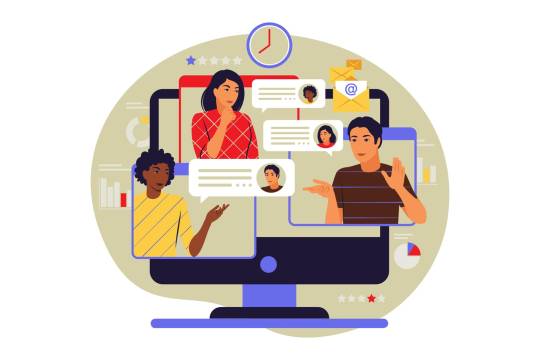
Since Covid-19, I've been a remote workers and currently on a hybrid schedule. In this digital age, knowing how to nail telecommuting pros and cons is essential for individuals and businesses.This guide will walk you through the pros and cons of remote work, using recent insights to help potential telecommuters and business owners. Telecommuting Pros and Consperson shrugging, with speech bubbles showing a check mark and a cross above their head, showing pros and cons.Definition and Evolution of TelecommutingTelecommuting, also called remote work, lets employees do their job from anywhere, using technology to stay connected with their teams.The concept has really grown in the past few decades, especially with the global shift during COVID-19, turning it from niche to necessary for many businesses.Current Trends in Remote WorkThe shift towards remote locations for work isn't just a trend, but a norm in the traditional office environment.Companies have witnessed a positive effect on employee performance when adopting flexible remote work opportunities.Technological advances that facilitate effective communication regardless of physical locations underpinned this shift, making home offices a viable mainstay for many professionals.The Pros of TelecommutingGraphic illustration of two computer monitors shaking hands, with text "work remotely" repeated in the background, symbolizing remote collaboration.Increased FlexibilityOne of the most celebrated advantages of telecommuting is the flexibility it offers.Employees enjoy the freedom to design their work schedules around their peak hours and personal obligations.This flexibility boosts employees' happiness and keeps them around.A study from Stanford University found that telecommuters reported higher job satisfaction and reduced turnover intent because of the flexible nature of their work arrangements.Better ProductivityContrary to common skepticism, many organizations report that telecommuting leads to an uptick in performance.Fewer office interruptions, reduced commute times, and a personalized work environment are factors that many organizations attribute to this increase in performance.According to a report by ConnectSolutions, 77% of those who work remotely at least a few times per month showed increased efficiency, with 30% doing more work in less time and 24% doing more work in the same amount of time.Environmental and Financial BenefitsBy reducing daily commute times and supporting flexible work arrangements, telecommuting contributes to lower carbon emissions and public transportation use. These changes not only benefit the planet but also offer significant cost savings in transportation and office supplies, aligning with a sustainable and economically beneficial work model.The Cons of TelecommutingSplit illustration comparing two remote workers: one smiling and organized, the other frustrated and disorganized.Isolation and Mental Health ChallengesWhile working from home can reduce stress, it can also lead to feelings of isolation and loneliness. Being away from colleagues and the everyday social interactions of an office environment can take a toll on mental health.The Harvard Business Review highlights that remote workers often experience a sense of professional isolation, which can affect their mental wellbeing and overall job satisfaction.Communication BarriersDespite advancements in technology, remote work can still present significant challenges in this area. The lack of face-to-face interaction can lead to misunderstandings and a sense of disconnect between team members.Companies need to invest in robust communication tools and foster an organizational culture that promotes regular and open communication to mitigate these challenges.Work-Life Boundary IssuesMaintaining work-life boundaries in remote work environments can be challenging. The overlap of personal life and professional demands can lead to less stress management and longer hours, which might affect quality of life.Implementing clear guidelines and structured schedules can help manage these challenges effectively.Remote Work ProductivityWanna make the most out of remote work? Use effective strategies!Establish a designated workspace to create a focused environment.
Define clear goals and prioritize tasks to stay organized and on track.
Stick to a schedule and maintain regular work to maintain discipline.
Minimize distractions by turning off notifications and creating boundaries with family members or roommates.
Take regular breaks to recharge and avoid burnout.
Use tools and software to streamline workflows and enhance collaboration.
- Establish a dedicated workspace to create a focused environment.
- Define clear goals and prioritize tasks to stay organized.
- Stick to a schedule and maintain regular work for consistency.
- Minimize distractions by turning off notifications and creating boundaries.
- Take regular breaks to recharge and avoid burnout.
- Use tools and software to streamline workflows and enhance collaboration.
- Use video conferencing software like Zoom or Microsoft Teams for face-to-face meetings and collaboration.
- Use project management platforms, such as Asana or Trello, to track progress.
- Use instant messaging tools like Slack or Microsoft Teams.
- Implement cloud storage solutions like Google Drive or Dropbox to share and access files.
- Explore collaborative document editing tools like Google Docs or Microsoft Office 365 for real-time collaboration on documents.By leveraging these tips, you can enhance engagement and collaboration while working remotely.Important things to think about when telecommutingSetting Up a Home OfficeTo make telecommuting effective and comfortable, designing a dedicated home office space is essential.This space should be ergonomically sound to support long hours of work without causing discomfort or injury.Invest in a good quality chair, a desk at the right height, and sufficient lighting to reduce eyestrain.Consider the psychological aspects of your workspace: a tidy, clutter-free area can help in maintaining focus and separating work from home life.Technology and SecurityReliable tech is the backbone of effective telecommuting.Ensure that you have a robust internet connection, suitable software for collaboration, and hardware that meets the demands of your tasks.Cybersecurity becomes even more critical when working outside the traditional office environment.Use VPNs, secure Wi-Fi networks, and strong passwords. Regular updates and cybersecurity training can also help in protecting sensitive company information.Maintaining Professional GrowthOne drawback of working from home is that you might not be on the radar for promotions.To tackle this, actively hunt for opportunities to develop professionally and make sure your wins are visible to management.Engage regularly with your peers and superiors through virtual meetings and updates.You should definitely set goals with your manager so they know what you're achieving.In a remote work environment, you need to be proactive and make yourself known so people don't forget about you.HR is key in making sure remote employees get promoted and have chances to grow professionally like their in-office colleagues.Making the Decision: Is Telecommuting Right for You?Personal SuitabilityTelecommuting isn't for everyone.It requires high self-discipline, time management skills, and the ability to work independently.Reflect on your working style: Do you thrive in solitude, or do you derive energy from being around others?Also, look at your home environment. Is it conducive to productivity?Do you have the space to set up a dedicated office area?Answering these questions can help determine if telecommuting suits your personal and professional needs.Organizational ReadinessCheck if your main office and its leaders have a telecommuting policy that supports security, data protection, and remote employee tech support. A solid framework helps you make the most of remote work perks and keep everyone happy and productive.Next StepsAre you considering telecommuting, or have you already changed? From what I've seen, it's brought balance to my personal life with family. Share your experiences or ask questions in the comments below.For those looking to enhance their telecommuting setup or skills, check out our recommended resources or contact us for personalized advice.Let's make your remote work journey smooth and productive!
Read the full article
0 notes